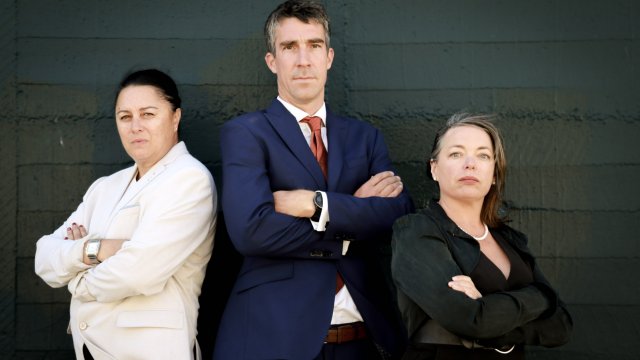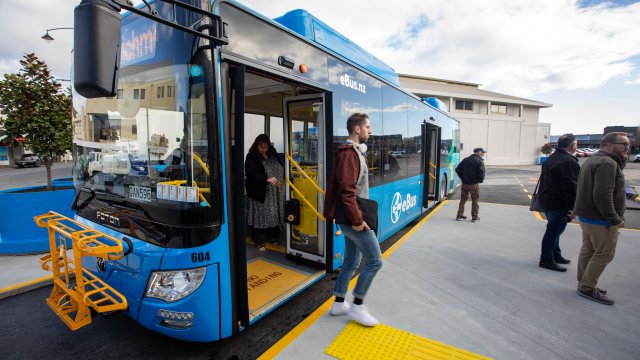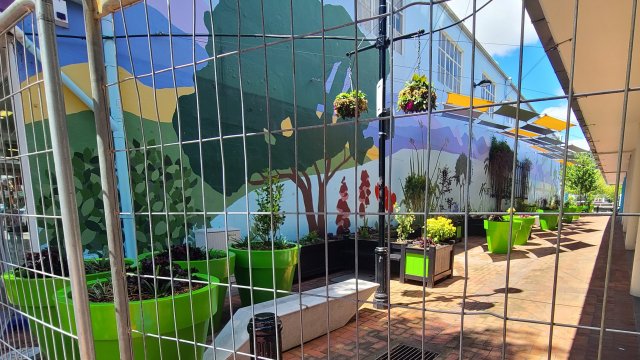Impact of new flood data and modelling on library development to be considered
20/09/2022 3:16pm
Nelson City Councillors will consider updated flood modelling information that impacts the inner city and Maitai riverside precinct, including the multi-use development with a library at its heart, at this week's Council meeting.
Flood modelling for the Maitai River presented to Council in September 2021 has been re-run to take into account the new projections for sea level rise released by NZ SeaRise: Te Tai Pari O Aotearoa in May this year.
Group Manager Infrastructure, Alec Louverdis, says Council staff are recommending that the implications of this new modelling are considered as part of the due diligence for the location of the library project.
“We have consistently said that decision-making by elected members, and officer advice around the location of this significant development, will be data-led. This also applies to projects throughout our city and close to the river and coastline.
“We are operating in a world where we need to plan for the impacts of climate change and sea level rise. We have to take into account new data with respect to the appropriateness of the location of a new library.
“As a result of the new data we are recommending that Council make the decision to defer negotiations with Wakatū to give us time to better understand the implications of the new SeaRise projections as well as the data captured from the August flood.”
Other aspects of the project that are unrelated to location will continue.
Community Services Group Manager, Andrew White, says pre-engagement meetings about what the library development can offer our community, held with organisations around the city, confirm Council’s decision to invest in the library development.
“It is clear from those we’ve already talked to that the project’s potential is about what it could be for our people and our city, rather than about where the development is. People have a vision for the new library development, and we want to continue to capture this vision, so we can hit the ground running when we have a confirmed location.”
The updated flood modelling comes at a time when Council is developing a long-term strategy to prepare Nelson Whakatū for the impacts of climate change.
A quarter of all households in Nelson are located near the coast or the lower Maitai River in areas that will be affected by climate change. There are also a number of proposed riverside developments that may need to consider engineering solutions to combat sea level rise.
Earlier this year, Council gathered initial views of the community on what they value about living near the water, such as ensuring access to the beach for walking, collecting mahinga kai and building homes that are climate resilient. This will inform the development of adaptation options for the city.
Mr Louverdis says that while the longer-term Plan is being developed, current Council projects need to be dynamic and responsive, taking into account the latest climate science and data.
“Fortunately, the updated river flood modelling shows negligible change on previous flood modelling in relation to the flooding impacts on other sites in the vicinity of the proposed site for the new library development,” he says.
“Of most significance is that the new data shows that the impact of coastal inundation is higher than previous MfE guidance. The roads in the vicinity of Trafalgar and Halifax intersection would likely need to be raised by around 800mm to provide reasonable security of access to riverside facilities, such as the library. This is a 300mm increase on earlier modelling.”
Louverdis says Council had anticipated road levels around the Trafalgar and Halifax intersection would need to be raised by 500mm in a staged and progressive way, so the increase to 800mm is a significant change.
FAQ
Why not pause the entire project until after Nelson Climate Adaptation is completed?
It will take considerable time for the work we are doing around climate adaptation to be formulated into a long-term plan. We cannot stop making decisions while this process takes place, but we can make decisions now using the best possible information.
Can you explain the timeline for decision-making around location?
We have consistently said that if new information comes to light we will take it into account regarding the location of the library development. This does not mean that the riverside location is not viable, but we do need to do our due diligence and consider options if necessary.
Council officers provide advice based on data and information, and new information becomes available all the time. This is why our long-term plan for preparing for the impacts of climate change should be dynamic, allowing elected members to make decisions that reduce or avoid risk in a changing scenario.
What about the geotechnical results, these also show the site is prone to liquefaction?
The geotechnical report identifies that the site is deemed to be susceptible to liquefaction in a moderate to strong earthquake up to potentially nine metres deep, and could experience a sudden loss in bearing capacity with lateral movement towards the Maitai River.
The geotechnical report provides options to mitigate this specific risk. It also provides several foundation options that need to be explored further.
While all options still need to be considered further and costed, there are no fatal flaws to building on the site and the report notes that, throughout New Zealand, developments are successfully undertaken on ground which could be expected to have similar or worse performance than the site.
What is the difference between sea level rise and river flood modelling?
Flooding in Nelson can come from both the river and the sea. Coastal inundation refers to flooding caused by seawater and can be influenced by storm surges and the tide. River inundation refers to flooding caused by fresh water during rainfall events and can be influenced by high levels of rain, as well as the tide.
Sea level rise is caused by climate change. Relative (or local) sea level rise includes both the change of the level of the sea (such as from global warming) and vertical movement of the land (such as from subsidence) for the relevant coastal area. Tidal gauges and satellites measure relative sea level rise.




